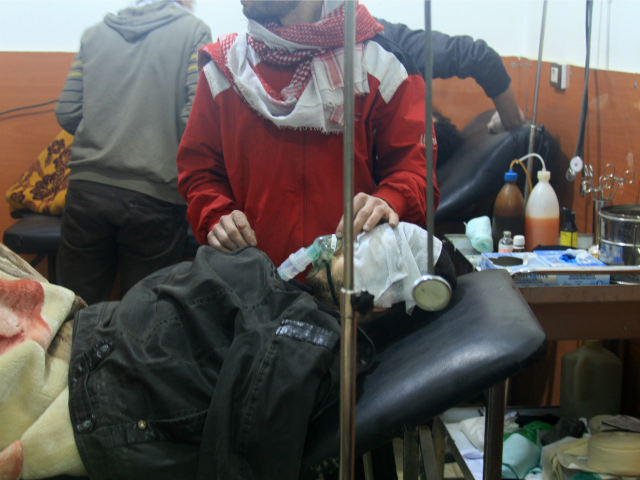The medical treatment of women and children, including a two-month-old baby, for exposure to chemical agents near Iraq’s second-largest city Mosul has prompted suspicion that the Islamic State (ISIS/ISIL) may have used chemical weapons.
Tens of thousands of U.S.-backed Iraqi forces and their allies are fighting to push ISIS out of Mosul, considered to be the terrorist group’s last major stronghold in Iraq.
When the operation to retake the city began in mid-October 2016, U.S. officials expressed concern that ISIS would use crudely-designed chemical weapons, primarily packed with a sulfur mustard gas agent, to defend Mosul.
On Friday, the International Committee of the Red Cross (ICRC) announced that their doctors were treating five children and two womenfor exposure to chemical agents, adding that it “condemns in the strongest possible terms the use of chemical weapons during fighting around the Iraqi city of Mosul.”
In collaboration with local medical teams, the ICRC is helping to treat the seven chemical weapons victims in Erbil, the capital of northern Iraq’s autonomous Kurdish Region, located east of Mosul.
ICRC did not explicitly say which side used the chemical agents on the women and children, which caused blisters, irritation, vomiting, and coughing.
However, the Washington Post (WaPo) reports:
Twelve people from the embattled city of Mosul, including a 2-month-old baby, have been treated for suspected exposure to a blistering chemical agent, medics said Saturday, as Islamic State militants strike back at government-held neighborhoods while trying to hold off advancing government forces.
The patients, who were being treated in a hospital in the northern Kurdish city of Irbil, displayed symptoms of a chemical attack, including blisters, burns, respiratory problems, irritation to the eyes and vomiting. They described three separate attacks with rockets carrying gas over the past week on neighborhoods in eastern Mosul recaptured by government forces.
Citing data collected by the research firm IHS Markit, Reuters reports “the Islamic State used chemical weapons at least 52 times in Iraq and Syria and at least 19 times in the areas around Mosul between 2014 and November 2016.”
“The ICRC had reinforced 13 medical centers in areas surrounding Mosul, some with capacity to treat gas attacks victims, ahead of the offensive that started in October.”
In northern Iraq alone, ISIS jihadists have already targeted U.S. troops, Kurdish Peshmerga forces, and civilians with chemical weapons.
On September 20, ISIS used chemical weapons against U.S. troops at the Qayyarah base, marking the first recorded chemical attack on the United States since the Islamic State’s rise in Iraq in 2014. No one was killed or wounded in the assault.
“We recognize this is real. They’re dead set on it. They would love to be able to use chemical weapons against us, against the Iraqis as they move forward,” U.S. Navy Capt. Jeff Davis, a Pentagon spokesman, told reporters in September 2016. “We are making every effort to make sure that we’re ready for it.”
The U.S.-backed Iraqi alliance fighting to retake Mosul has already liberated the eastern half of the city. They are now fighting to push ISIS out of the western half.
A local Iraqi news outlet cited an unnamed source as saying that Islamic State leader Abu Bakr al-Baghdadi admitted defeat in a recent “farewell speech,” telling his Iraqi fighters in the battlefield to “flee and hide” or “ blow themselves up when surrounded by Iraqi forces.

COMMENTS
Please let us know if you're having issues with commenting.